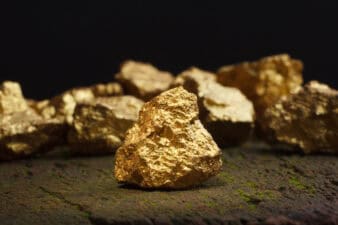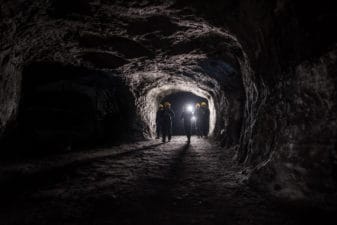Cameco Corporation (TSX:CCO)(NYSE:CCJ) is one of the world’s leading uranium miners, but you wouldn’t realize it from looking at the company’s stock price over the past few years.
Uranium miners have been hard hit by weak prices for nearly six years as the 2011 earthquake and subsequent tsunami in Japan all but halted any demand for uranium and nuclear power on the world stage, leaving an oversupply of uranium on the market.
Prior to the earthquake, uranium was trading near US$70 per pound, and there was strong demand for nuclear power. To illustrate how severe the drop in price was, uranium now trades below US$23 per pound, or nearly 68% lower than the pre-earthquake price.
Is there hope for Cameco?
Despite the depressed commodity prices, there is hope for both the price of uranium and Cameco. A renewed interest in nuclear power has started to gain traction over the past year, and over 60 reactors are currently under construction in 15 different countries. More than half of these new reactors are under construction in Asia and slated to come online within the next year.
Looking past the current batch of projects under construction, globally there are over 160 reactors in the planning phase and a further 300 in a proposal stage. Additionally, countries with existing nuclear facilities are looking at upgrading facilities as a way of increasing output to match growing demand.
For Cameco, this is significant. All of these new reactors will need fuel, which Cameco can provide, and will help address the supply glut that exists. Once the oversupply is addressed, the price of uranium, fueled by that renewed demand, should begin to rise again to Cameco’s delight.
Cameco is a long-term investment
Cameco’s stock price is down nearly 50% since the Fukushima disaster of 2011. Since then, Cameco has shuttered mines and reduced staffing levels–in some cases, significantly. While this has helped slow the bleeding, the company continues to burn cash. Throughout 2015, Cameco burned through 20% of its cash balance, and this trend continued in the first half of 2016, when Cameco’s cash balance dropped by a whopping 70%.
There is an upside to this, which is why Cameco is considered a long-term investment. The company has made huge investments in a number of high-performing mines, such as the Cigar Lake mine, which began producing uranium in 2014, 10 years after being approved. The final price tag for that mine came in at a whopping US$2.6 billion, whereas costs were originally slated to be just US$450 million. Now that the mine is up and running, however, costs start to stabilize and the debt that Cameco incurred can start to be paid back.
Cameco’s strategy is to weather the current price storm and to strive to become leaner and more efficient along the way. The company has put an emphasis on higher-performing facilities, and shuttered other ones, such as the Rabbit lake facility, which was closed earlier this year.
Another interesting long-term point to make about Cameco is the dividend. Despite a significant reduction in the share price and less than stellar uranium prices, Cameco maintains a quarterly dividend that hasn’t changed in years. The current dividend stands at $0.10 per share, which gives the stock a 3.86% yield at current prices. For now, this is an impressive dividend, but investors should note that if Cameco continues to burn through cash or the uranium market does not recover, that dividend could start to suffer within the next few quarters.
In my opinion, Cameco represents a long-term opportunity for investors looking to diversify their portfolio with a stock that holds great potential.





